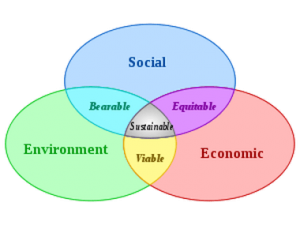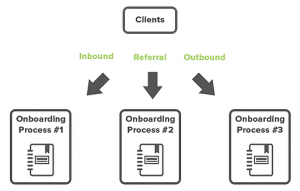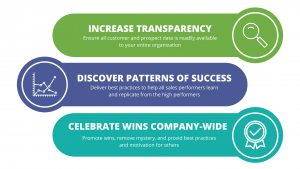Has the nature of our work environments drastically shifted that now we need a whole new way of managing organizations?
Frederic Laloux, corporate advisor and author of Reinventing Organizations believes there is a fundamental shift that needs to happen. After screening and studying organizations in many different sectors and geographies, he says that leaders are observing trends that require a new way of running organizations. He states that the traditional system use to manage organizations has “stretched beyond its limits”. He also acknowledges that his thoughts on an entirely new organizational model might be “audacious”. Laloux is a proponent of and advocate for organizations that are self-organized and self-managed.
Self-managed organizations are a far stretch from where organizations are today.
Transitioning from a traditionally managed organization to a self-managed one overnight isn’t responsible either. However, with 70% of the workforce actively disengaged or not engaged, something needs to be done now. Recently we spoke with Dr. David Burkus, podcaster and author of The Myths of Creativity and, his latest book, Under New Management. What we learned from David might just help your organization find a starting point, or a middle ground between an irresponsible overnight shift to a gradual transition. A gradual transition that will reshape employee engagement and improve your company culture. In this blog, you’ll find five lessons from David Burkus to reinvent the structure of our organization and its culture.
Five Lessons to Reinvent Company Culture: It’s “Under New Management”
1. Trust
David acknowledges a truth we might not see in the trenches of business every day. Due to the shift, out of the industrial age and into a knowledge worker environment, leaders have no choice but to trust their teams. “We have to realize that at a certain point, the person who’s on the frontline doing that creative work knows more about it than the person who’s managing…our only choice is to really trust that they know how to do the job best”. Without true trust in our teams, we can’t expect them to be creative, we can’t expect innovation. Jason Fried and David Heinemeier Hansson, founders of Basecamp, see trust as one of the fundamental factors that create a “Rockstar environment” along with autonomy and responsibility. To build trust within your team, you must extend trust first.
2. Change Management
It’s not the new policy or procedure that leaders push back on, David says “it’s the change itself, it’s the work involved in switching to a new thing”. If we could only acknowledge that behind the curtain, employees aren’t truly happy or engaged, we might be more proactive with change. If we simply agreed there was a possibility that employees could be more engaged and happier. With that agreement, then we see the possibility for a stronger organization, one with happier customers and, in turn, happier shareholders. But it’s not that simple to acknowledge our organization isn’t perfect. David uses a simple analogy he compares organizations to the combustion engine which are only thirty percent efficient. “Engines & organizations share a lot of things in common. Most companies now are charged with taking the mental energy of their people and turning it into value for customers and, ultimately, what becomes profitability for the organization. So again, we’ve got to ask, how much of that energy are we actually capturing?”. This analogy isn’t that far off; combustion engines are only efficient and employees are only thirty percent engaged. We have room for improvement and David agrees; “If you want something better, then let’s talk about something better. But, if you want to call that work and you’re cool with seven out of ten people just doing their job and just checking out and just going through the motions, then sure, whatever, then don’t change.”
3. Pay Transparency
One of those difficult changes might be looking at how organizations pay their employees, rather how employees view their pay compared to others in the organization. In Laloux’s Reinventing Organizations he looks at examples where Teal organizations put the power in the employees’ hands. Teal organizations allow employees to set their own salaries (with guidance of their peers). While this might be a drastic switch in Under New Management, David outlines several stages to pay transparency, that he discussed during our recent interview. From organizations like Buffer, who share salaries publicly to other organizations and who share salaries internally. Alternately, some organizations don’t share salaries by name and title, but in ranges associated to roles. David states the reasoning behind pay transparency, “There’s a ton of research that shows that when people know that they’re being paid fairly and what they need to do to earn more pay, then they’re more likely to work hard and try to improve that pay”. The second benefit is pay equality and closing the gender gap.
4. Organizational Structures
One concept that is very similar with David’s approach and Teal organizations is the idea of people first, strategy second. David says to “write the org chart in pencil”. An org chart that isn’t permanent and can be adjusted and matches the mentality of project work. David’s insight into why project work needs an adaptive organizational structure helps frame this concept. “Companies are adaptive so often; the environments change, the lifecycle of a product is dramatically shortened and so, a lot of companies are finding that it’s better to think about the basic building block of a company as a ‘project’, not the job”. Within Teal organizations the thought is similar, individual roles are developed. For example, one employee may have five or six different roles. Depending on new projects or customers, these roles can be swapped out with other team members, or combined when hiring needs to happen. Simply stated, people are not put in jobs or stuck in roles that won’t or can’t shift as they grow. The strategy evolves like people do.
5. Paying Employees to Quit
Our final lesson from David is focused on poor performers and disengaged employees, specifically ‘paying them to quit’. First, he points out that with this as a strategy, employees truly WANT to work at the organization. Those employees who don’t want to stay with the company, who aren’t engaged and aren’t motivated, have a choice. The second benefit that David highlights is with team members that stick around and choose to stay. Learn more about paying employees to quit in the full blog post here.
While you and your organization may not be ready for the big leap to a self managed organization, there are still opportunities to begin to adapt to an environment where knowledge workers and millennials rule. Start with trust, an open mind to change, then begin making the shift with new ways to look at your organizational structure, pay compensation and equality, and finally, performance management.
Business & Finance Articles on Business 2 Community(68)








